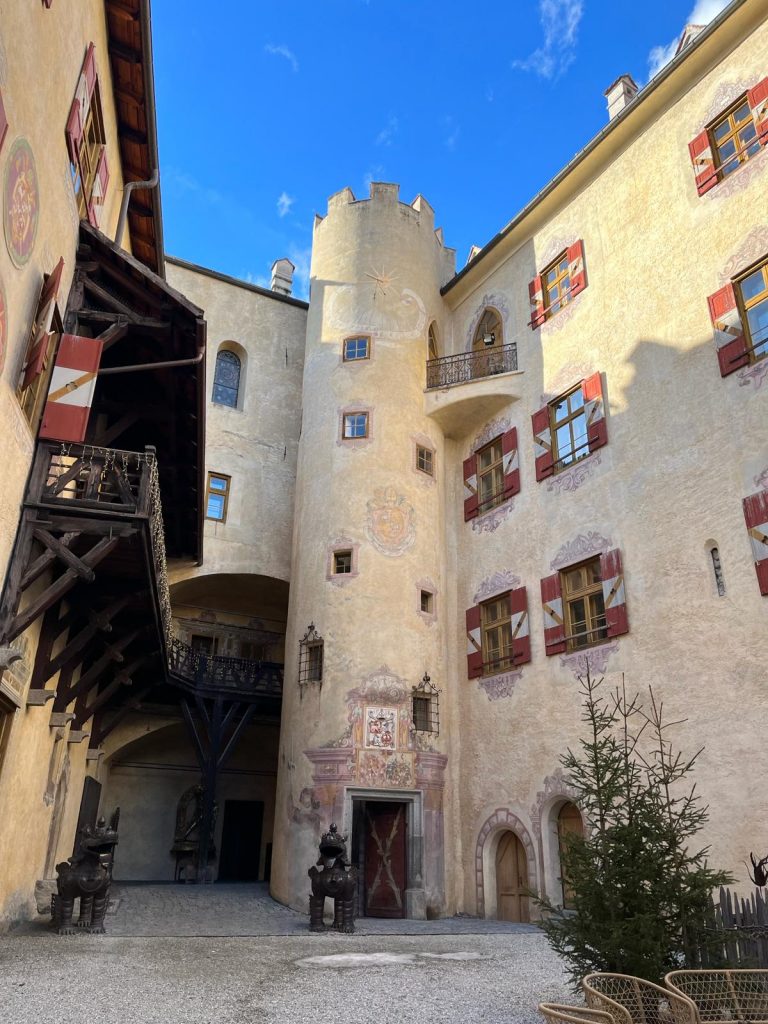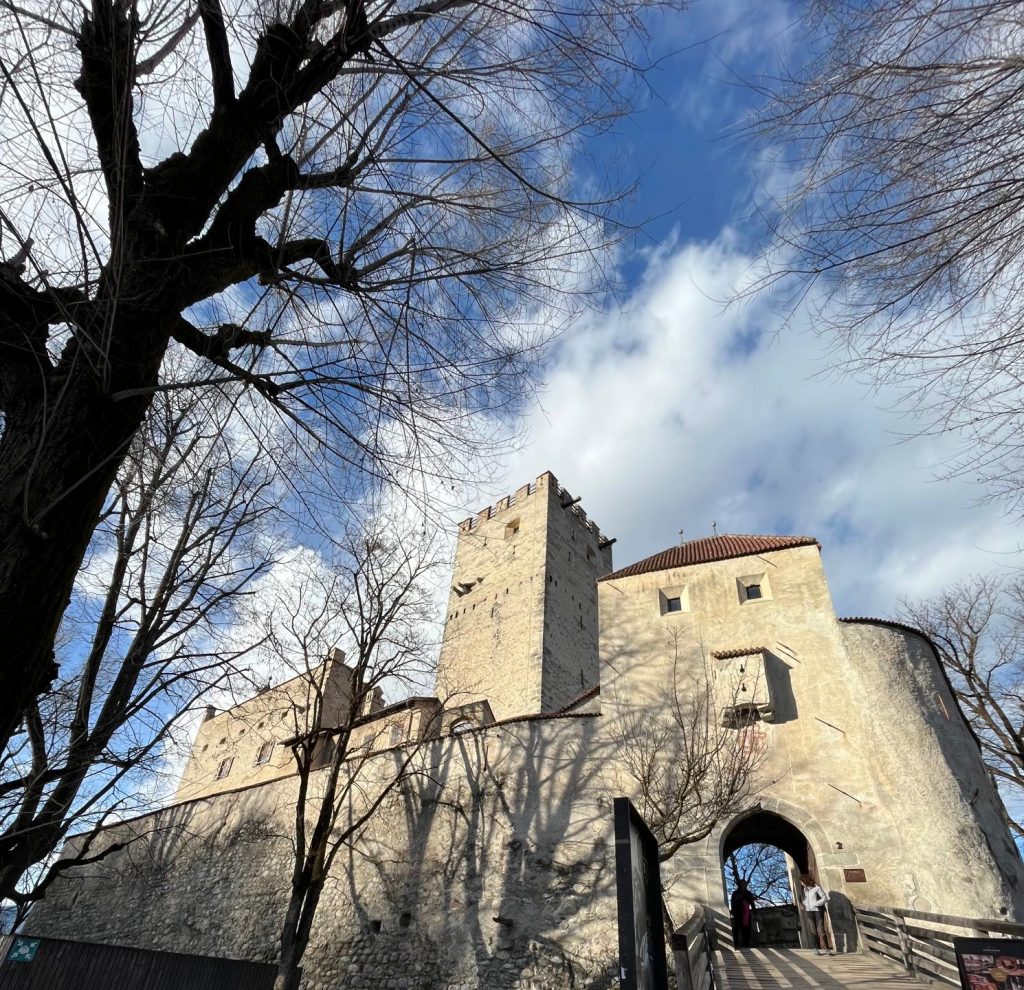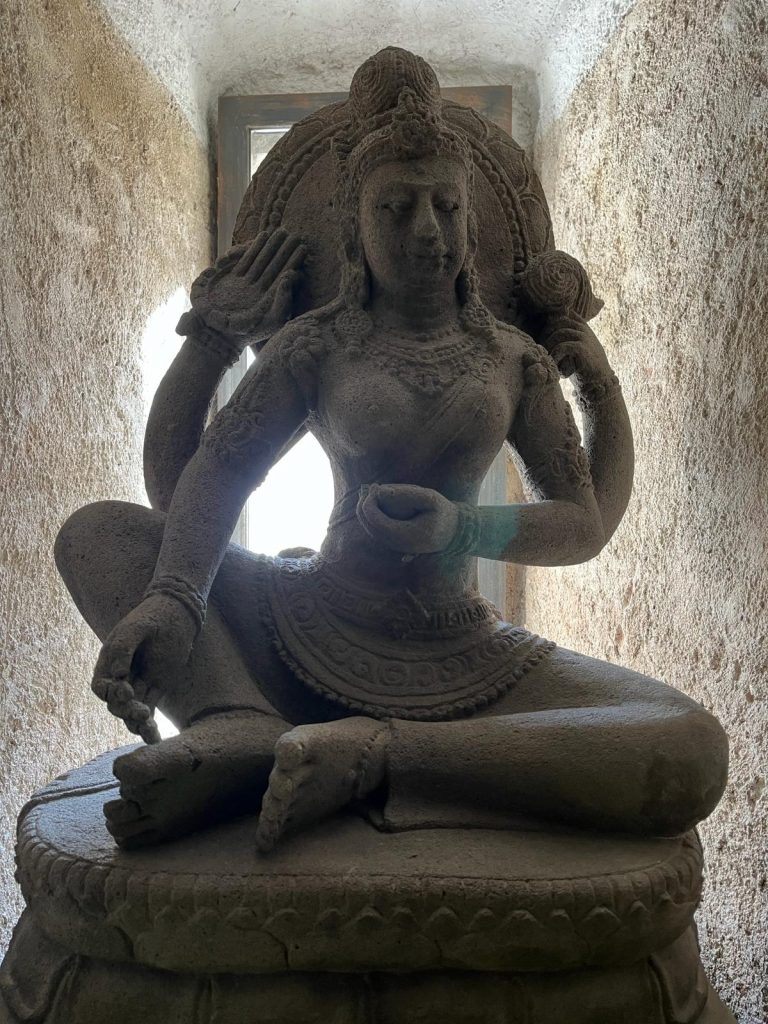Exploring the Dolomites
The Castle of Bruneck, Brunico

Messner Mountain Museum
In Brunico, the Medieval Castle overlooking the city promises excellent views, but also contains an exhibit about mountain cultures throughout the world. Bruneck, also known as Brunico in Italian, is one of four great cities to explore in the Dolomites should you decide to take a break from the trails (Bolzen, Merano, and Bressanone are the others). You can get a dose of real Italo-Austrian culture while still being surrounded by magnificent peaks and valleys.
When we set out to explore the Dolomites, the Medieval castles perched on peaks or nestled in hillsides add to the sheer magic of this region. We had driven by so many that, when I saw the Brunico castle soaring over the city, we finally had to stop. We were surprised to find a much different atmosphere than expected. After climbing the gentle slope to the castle, we discovered medieval towers and stairways, but also mountain climbing and camping gear on display along with Shiva statues and Mongolian tents.
Constructed between 1251 and 1288 AD by the Bishop of Brixen, the Bruneck castle was originally built as a fortress to protect the Bishop’s territory in the Val Pusteria. The town of Brunico sprung up around it. “Schloss Breck” in German or “Castel Brunico” in Italian was enlarged in subsequent centuries and took on its present form as a residence. At one point, the southern portal was only reachable by drawbridge.

Messner Mountain Museum
In 2011 South Tyrol native son Reinhold Messner inaugurated the Ripa MMM Museum, dedicated to mountain culture and mountain exploration throughout the world.The castle in itself is worth a visit, but the exhibit is really something special. Messner is a world renowned mountaineer who got his bearings climbing the nearby peaks of the Odle Group and other summits of the Dolomites.
Messner and Austrian Peter Habeler were the first people to climb Mt. Everest without the use of contained oxygen in 1978. Two years later, Messner was the first to do the solo climb of Everest, again without supplemental oxygen. He went on to become the first person to climb all of the world’s 14 tallest mountains. The museum tells the story of what he found on his adventures through high-elevation communities.
You can see Mongolian huts, ornate doors from Pakistan, Peruvian Shamanic instruments, and Messner’s equipment. You can consider at the similarities between high-altitude cultures all throughout the world. We get to see it through Messner’s eyes and consider: What does it take to survive mountain communities? How are the houses constructed? What’s their relationship to the harsh terrains? For example, some of the high mountain homes of Nepal have surprisingly similar features to the houses you see when you explore the Dolomites.

A room now called “Nirvana” leads you down a castle hallway lined with Buddha and Shiva statues. Anyone who practices yoga may recognize the mudras. And you’re still thinking, but wait, I’m in a medieval castle. Behind the Shivas heads are the tiny medieval windows that give you a glimpse of expansive valleys beyond.
This Messner Museum is one of six throughout the Dolomites. The Brunico castle is within walking distance of the city center, and it’s definitely a beautiful city to explore before heading back out to the trails. .
- Vicolo Castello / Schlossweg 2 – 39031 – Brunico / Bruneck
- +39 0474 410220
- ripa@messner-mountain-museum.it